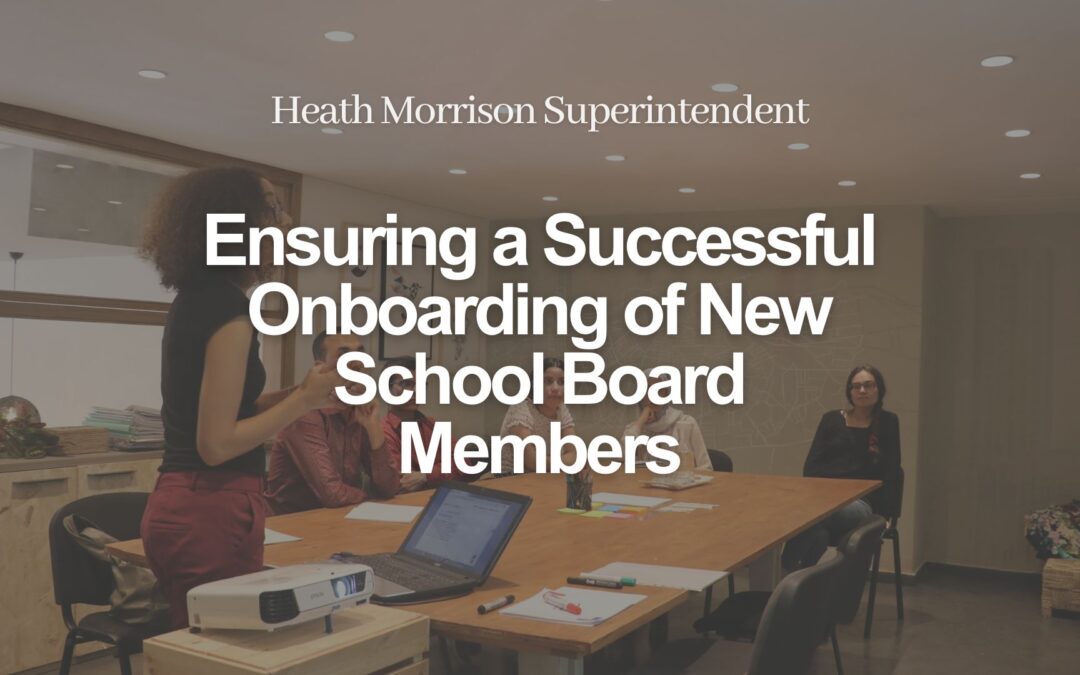The results are in! The votes are counted, and new school board members have been elected. It is important for district leaders to have a process in place to manage this time of transition and change in school board dynamics. Each new board member will bring a unique set of needs, work styles and priorities to their roles.
Hopefully, your newly elected trustees are coming onboard because they care about school improvement and positively influencing student learning. Hopefully, they are inspired and ready to work collaboratively to infuse your school board with fresh ideas and new perspectives. Of course in today’s political climate, this may not always be the case. Having a thoughtful onboarding process in place can help ease the transition for everyone, as newly elected board members settle into their new roles:
Welcome Announcement – It’s helpful to make a new board member announcement at the district level. This helps a new trustee feel “official”, and part of the team. It also informs the larger community about the change in school board representation. Community members may have gotten to know a bit about the new trustee during their run for office, but it is important for the school district to publicly acknowledge the trustee in their new position. This is also a great time to publicly thank any outgoing trustees for their service as they step away from their roles.
Informal Connections – New trustees will take the oath of office and be formally introduced at the first official board meeting, but it is important to provide opportunities to connect with the superintendent and their fellow board members beforehand. This unhurried, unstructured access helps the new member assimilate, having an opportunity to get to know their counterparts in a relaxed setting outside the boardroom. There is a lot to learn when you agree to serve, so an informal meeting allows new arrivals time to ask questions and feel prepared for their first board meeting.
Provide “Where We Are” Materials – New board members should be provided straightforward background materials that can be taken home for review. These documents should help explain the current state of the district. Key documents might include board roles and responsibilities, board policy, financial data including budget, contact information for current district leaders and board members, and a calendar of upcoming meetings and events. Basic expectations about communication protocols, meeting etiquette and an outline of training requirements should also be included in this set of information.
Share the district’s vision, “Where We Are Going” – The ultimate goal of any school district is student success, with well-defined goals developed around student achievement, school safety, financial integrity, human resources, and communication. Keeping the board’s focus squarely on the district’s shared vision and progress in each area will help minimize potential distractions and personal agendas. These conversations about where the district is headed, along with major initiatives on the horizon will likely occur as trustees become more and more comfortable in their roles. District leaders should be prepared to answer questions candidly and respectfully. The best leaders are learners, so it is critical to help new trustees understand not only the district’s goals, but also the rationale behind them.
Prioritize Communication – Clear and consistent communication is foundational to every strong relationship; superintendents and school board members are no exception. Superintendents should recognize that board members generally serve in a variety of other roles in the community, as business owners, church members, and as leaders of parent organizations. Board relations are made stronger when superintendents empower board members with accurate information about what is happening in the district. Establishing a plan for communication, whether it be through a weekly update or another method, helps keep board members informed on “hot topics” and issues pertinent to their decision making.
Leveraging proper board training, open communication, and a clear understanding of the board member’s role sets the Team of Eight up for success. Investing time in the onboarding process for a new board member will reap benefits over the long haul, helping the entire team stay laser focused on the best interests of our students.

